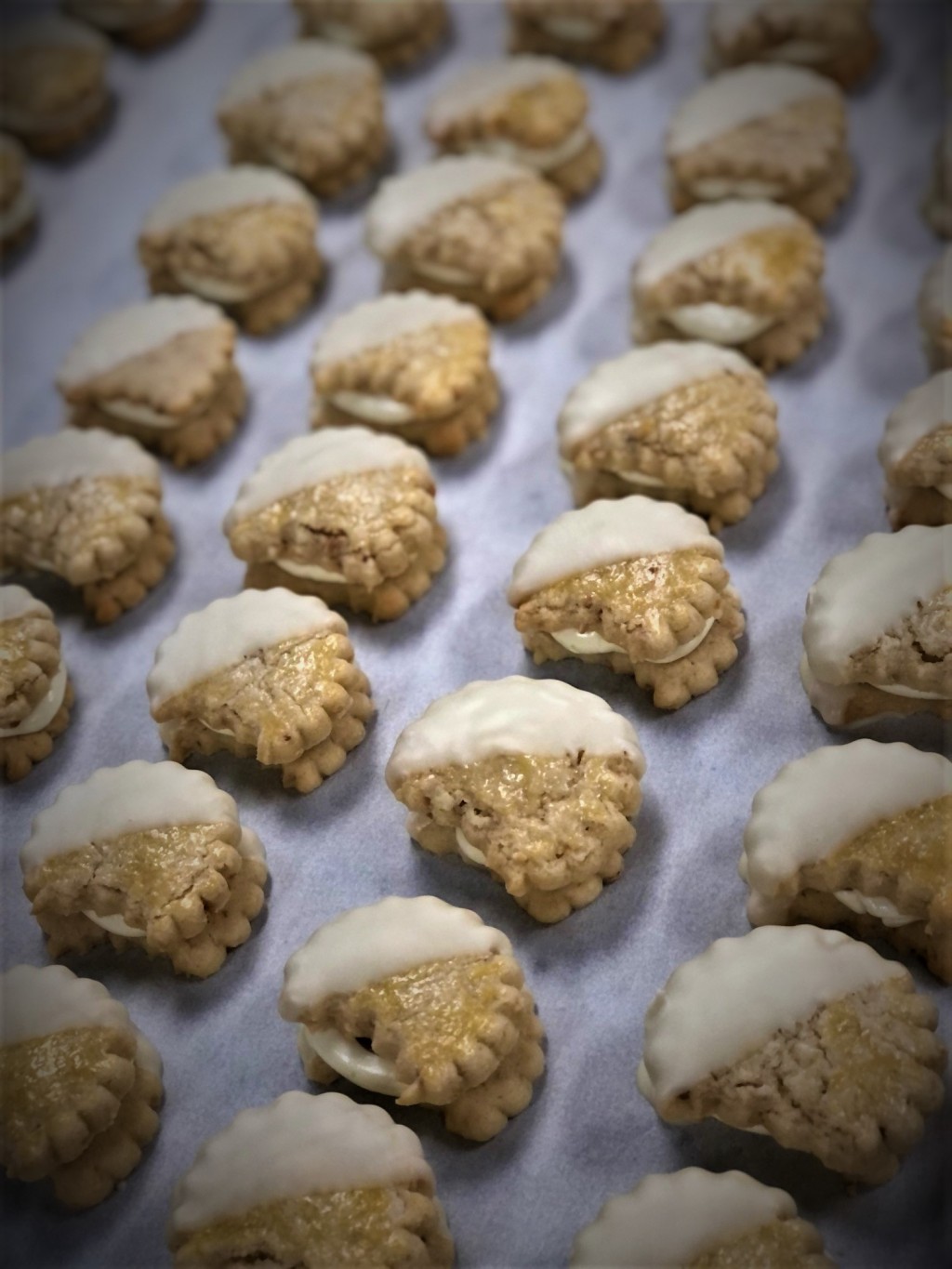

Purchasing whole chickens and breaking them down yourself will save you money and help to improve your cooking skills. Known as fabrication in professional kitchens, the act of cutting whole birds, large pieces of meat, or fish into individual portions is a skill set that once learned is very applicable at home. Additionally, the bones, scraps, and often fat can be used in other preparations one of the most important in poultry fabrication is the bones that can be used to make flavorful stocks which lead to the best soups and sauces.
In this post, I will break down a whole chicken into useable parts that I will use to prepare three separate dishes along with a bonus portion of wings that can be frozen and used for another dish. When planning this post, I decided to go to the Springfield farmers market to get some tasty locally-produced birds. I talked to my friend Spenser, owner of Red Fern Farm of Carthage, Missouri to tell him my idea. He was delighted and gifted me three chickens to use in the post. To be specific, the chickens were 3 1/2 lb. WOGs (a standard term in the industry that means whole chickens without giblets). The non-GMO (not genetically modified) Road Island Red cross-bred birds were frozen and pasture-raised in a free-range manner. For more info on the farm go to their FB page at https://www.facebook.com/TheRedFernFarm.

When purchasing chicken either commercially or for the home kitchen there are many options. One thing to keep in mind and the main point of this post is that when someone else cuts up the birds prior to purchasing them, you as the consumer will pay more per pound.
The common ways to cut up whole chickens to be used in cooking are as follows: 8 cut- bone-in, halves or quarters, boneless breasts, airline breasts with the first joint of the wing attached, tenderloins, boneless or bone-in thighs, drumsticks, wings either whole or cut into drumettes and flats. For this post, I broke down the chicken into boneless skinless breasts, boneless skinless thighs, drumsticks, chicken wings- drumettes and flats, and the carcass which I use for stock.

Pictured below are the steps I used to break down the chicken. Done in this order first: remove the wishbone, then the breast with wings attached, remove the thighs, remove the skin, bone out the thighs, remove the wings from the breasts, remove the skin, take off the tenderloins, then pound out the breasts under plastic wrap and reserve the rest of the chicken for the other dishes.



Mercer Knives
For this post, I used one of the new butcher knives that I received from a sales representative from Mercer Culinary to try out and give them feedback on how I like them. The butcher knives are engineered to be used for specific fabrication purposes. The three knives that I received are an offset curved semi-flexible boning knife (which I used to break down the chickens), a gratin-edged breaking knife which is used for breaking down large cuts of meat (known as Sub-Primals), and a long fillet knife (used mostly for fish). Mercer is a widely used knife brand used in culinary schools and in professional kitchens. The curved boning knife had a great feel in my hand and was extremely sharp and lightweight.

Chicken Breast
Once the chicken was fabricated I first seasoned and dredged the chicken cutlets and sauteed them in olive oil. The next steps are shown in the following image – brush with pesto (chopped fresh basil leaves can be substituted), top with prosciutto ham, then add thinly sliced tomatoes, sliced fresh mozzarella, and finally sliced provolone. Bake at 350F until fully cooked.

Once baked I served the chicken with corn risotto, zucchini ribbons, split cherry tomatoes (from my garden), and roasted cherry tomato sauce. The sauce recipe can be found on my recipe page.

The rest of the Chicken
This next set of images illustrates how used the rest of the chicken.
I cut and marinated the thigh meat and chicken tenderloins with garlic, white wine, lemon juice, olive oil, and fresh herbs from my garden (Basil, Oregano, and Mint). I let the marinade infuse well with the meat overnight in the refrigerator. Then I cut and blanched red onions, zucchini, and red peppers and skewered them on bamboo to make Mediterranean-style Kabobs. Grilling them over hot charcoal, making a delicious healthy meal served over rice.
Lastly, I prepared a chicken stock from the carcass and the trimmings which I made into a chicken, kale, and noodle soup. Many of the ingredients came from my garden. The ingredients as shown in the photo are garlic, onions, celery, red peppers, Anaheim peppers, diced skinned and seeded tomatoes (tomato concasse) kale, fresh basil, oregano, thyme, and fennel fronds. I roasted the chicken drumsticks and the wings then simmered them in the soup until the meat was extremely tender. Then I removed the chicken, took off the skin, and pulled the meat off the bones. I then added the pulled meat back to the soup with some cooked pasta and voila! I had my third meal from one chicken. My wife and I enjoyed the soup with grated parmesan and garlic bread for lunch on another day.
Procuring whole chickens and learning how to break them down and fabricate the different cuts will most certainly save you money and allow you to create more nutritious meals. Preparing them with fresh garden produce will bring even more satisfaction and an even higher level of nutrient-dense food for you and your loved ones to enjoy. Until next time my friends from my kitchen to yours I wish you Happy Cooking…







Leave a comment